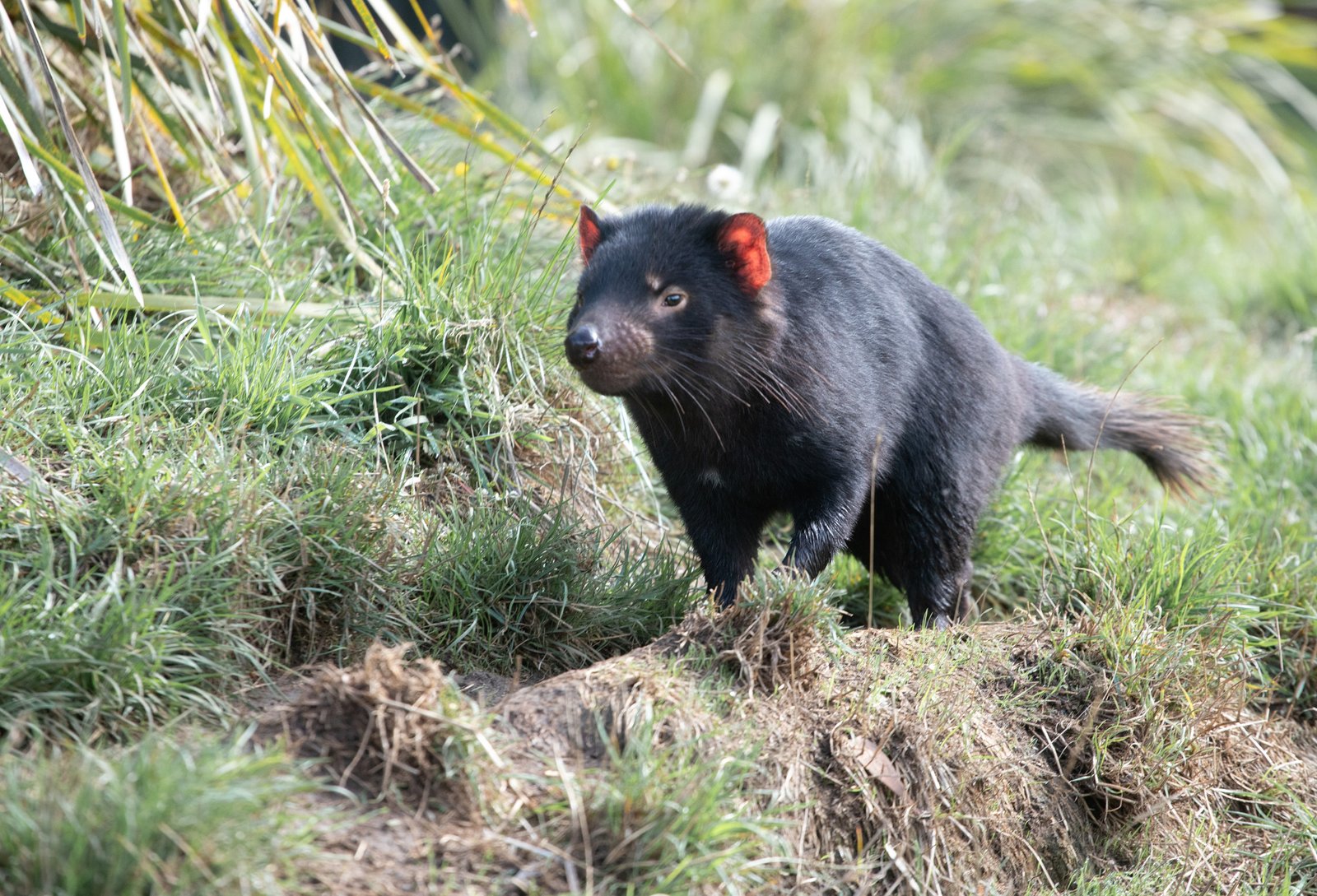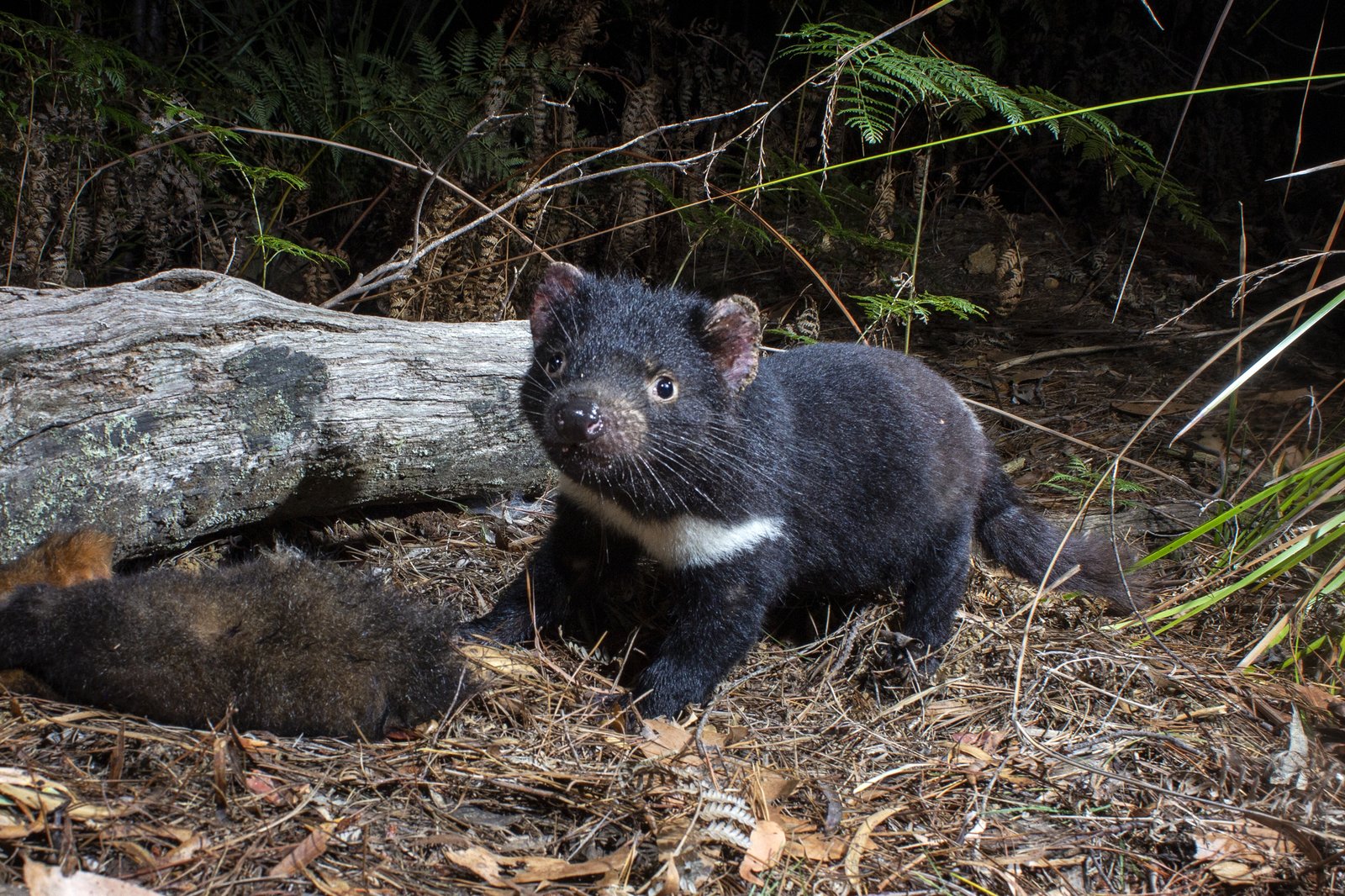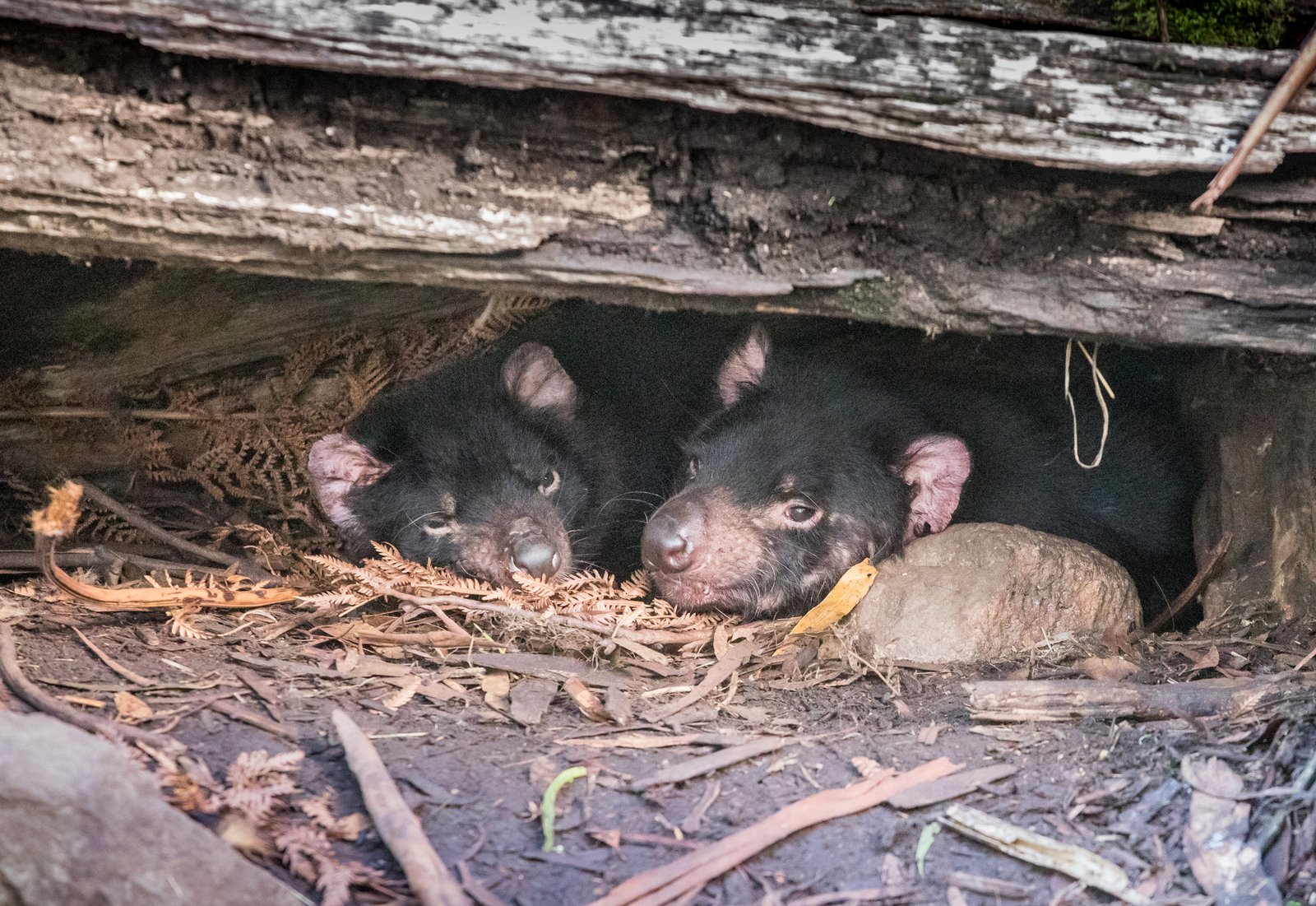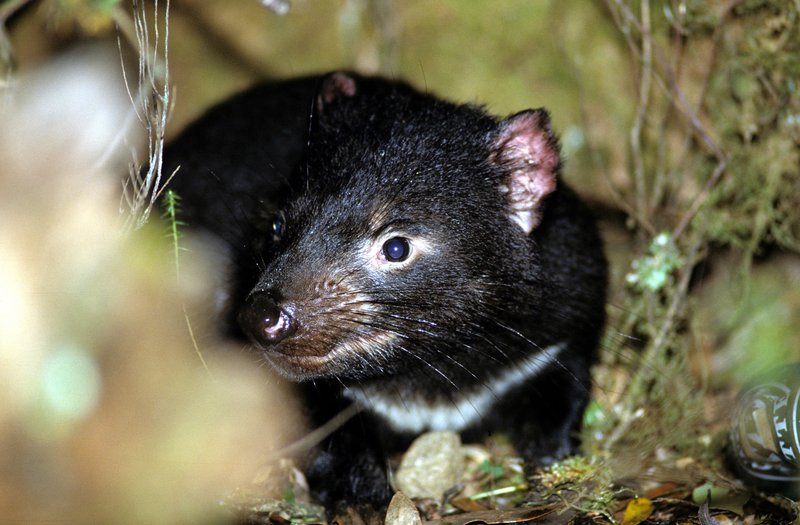Tasmanian Devil
The Tasmanian Devil is the world’s largest surviving carnivorous marsupial.
What do Tasmanian Devis look like?
Identification
Having the appearance of a small dog, it is characterized by its black fur and white markings on the chest and some times rump. Their stocky nature is accentuated by their short muzzle and limbs.
Size range
55-65 cm head to tail; 24-25cm tail. Stand about 30cm high from the shoulder

© CC BY-NC 4.0
Where do Tasmanian Devils live?
Habitat
Devils are widespread across Tasmania from the coast to the mountains seeking out any areas where they can hide, shelter and find food. These include coastal heaths, open dry sclerophyll forests and mixed sclerophyll-rainforest.
Distribution
Tasmanian Devils were once abundant on mainland Australia as evidenced by fossil remains. Reliable fossil evidence suggests they became extinct from the mainland between 3,200 and 3,500 years ago. They are widespread and common in Tasmania but are not currently found on the Bass Strait islands, although subfossils have been found on Flinders Island.
Specimen in our collection
View microCT scans of a Tasmanian Devil skull (Sarcophilus harrisii) from the Australian Museum Mammalogy Collection (specimen AM M.42662). Learn more about microCT scanning and how it is used by the Australian Museum Research Institute.
What do Tasmanian Devils eat and how have they adapted?
Feeding and Diet
Tasmanian Devils are mainly scavengers feeding upon the carcasses of dead animals but can also be effective predators. Their source of food includes wallabies, small mammals, birds, reptiles, amphibians and insects. In farming areas they are also known to feed upon the carcasses of sheep and cattle. Their powerful jaws and teeth enable them to entirely devour their food including bones and fur. They are particularly renowned for their noisy communal eating during which use noise and threatening physical displays to assert dominance amongst the pack.
Other behaviours and adaptations
Devils are nocturnal who spend their nights roaming great distances (up to 16 km) in search of food. During the day they hide in their den or in dense bush land. Devils are not territorial but they do have a home range. Devils have a reputation for being aggressive due to their famous threatening gape and for the range of fierce noises they make. Most of these displays however are used as part of feeding rituals or produced through fear rather than aggression. Young devils are quite agile and can climb trees. They are also spend a lot of time in playing with each other which involves wrestling, biting, chewing and creating a lot of noise. This kind of behaviour will be put in to practice at meal times as adult devils

© CC BY-NC 4.0
How do Tasmanian Devils mate?
Mating and reproduction
Tasmanian Devils mature in their second year and usually mate in March. After a gestation period of 21 days the females give birth to between 20 and 30 young called 'Joeys'. Since the mother only has four teats, most young will not survive. Mothers carry the young in a rear-facing pouch for about 4 months. After this period, the young are left in a den (often hollow logs) until they are fully weaned at 5-6 months.

© CC BY-NC 4.0
Are Tasmanian Devils endangered?
Conservation Status
Tasmanian Devils are wholly protected. They are listed as ‘endangered’ under Tasmania’s Threatened Species Protection Act 1995 (May 2008); the Commonwealth’s Environment Protection and Biodiversity Conservation Act 1999 (May 2009) and are placed on the Red List of the International Union for the Conservation of Nature and Natural Resources (2008).
In the past numbers were controlled by the availability of food and loss of habitat but the greatest current threat for devils is the Devil Facial Tumour Disease (DFTD). This fatal condition is characterised by facial tumours and is one of only three contagious cancers ever recorded. It is believed to be transmitted from devil to devil through biting.
References
- Brown, O. 2006. Tasmanian devil (Sarcophilus harrisii) extinction on the Australian mainland in the mid-Holocene: multicausality and ENSO intensification. Alcheringa: An Australasian Journal of Paleontology 31: 49-57
- White, L. C., Saltre´, F., Bradshaw, C. J. A., Austin, J. J. 2018. High-quality fossil dates support a synchronous, Late Holocene extinction of devils and thylacines in mainland Australia. Biology Letters 14: 20170642.
Support the Australian Museum
Your donation supports the exceptional work of our inspiring scientists, explorers and educators as they help to protect Australia’s vital natural and cultural heritage for generations to come.
Donate now

